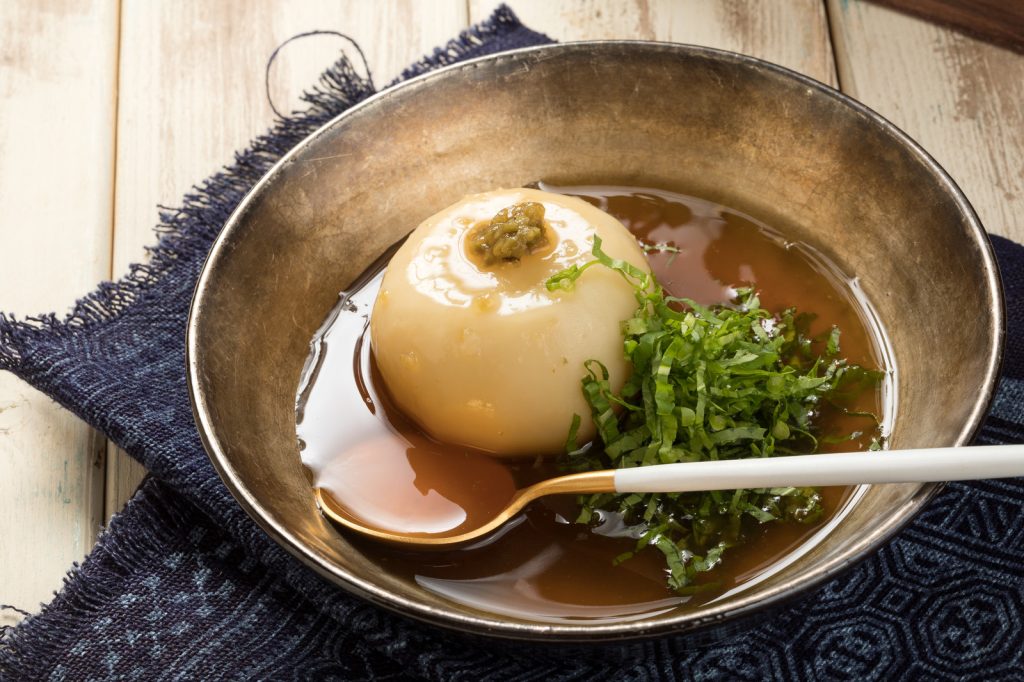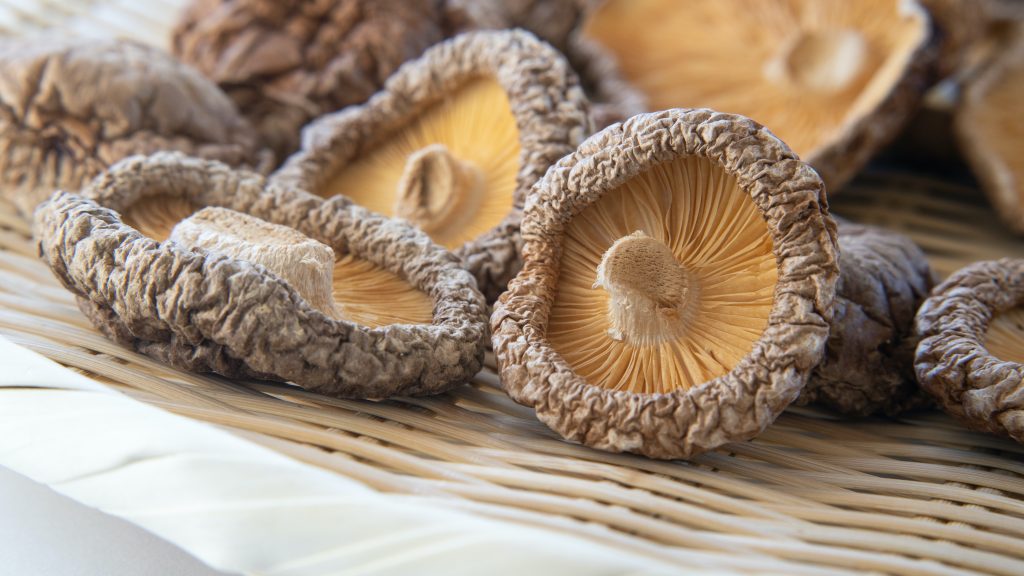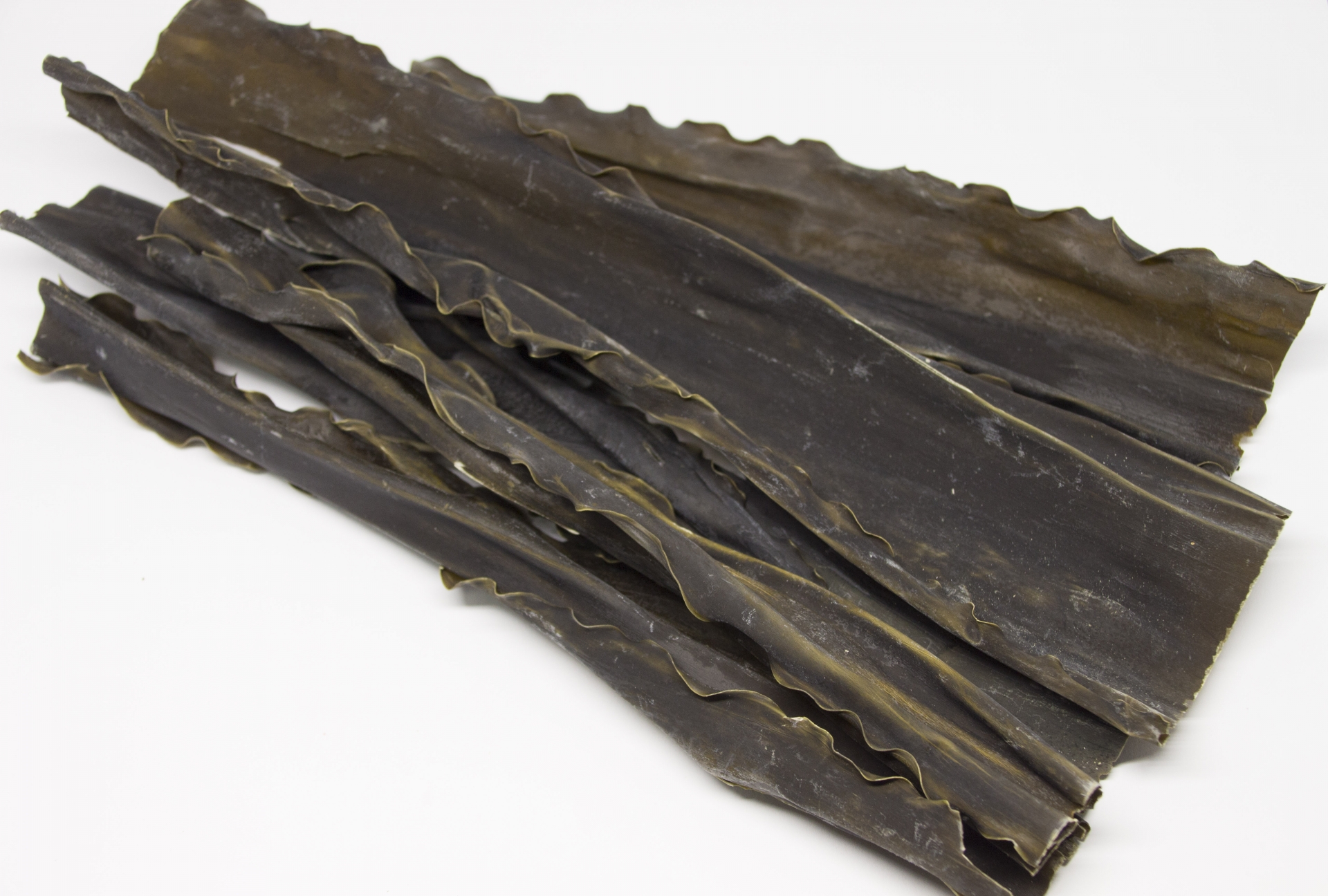Kombu, also known as kelp seaweed, is a cornerstone of traditional Japanese cuisine. While seaweed has gained popularity globally—especially in California with kelp noodles, kelp sushi, and seaweed snacks—kombu remains a hidden gem for many outside Japan.
This article will introduce you to what kombu really is, how it’s used in authentic Japanese cooking, and why it might be the healthful, flavorful ingredient you’ve been missing.
What Is Kombu (Kelp)?
Kombu is a type of edible kelp, part of the brown algae family, and is most harvested in the cold, mineral-rich waters around Hokkaido, Japan. Unlike many types of seaweed, kombu is thick, dark, and often sold dried. It’s not just any seaweed—it’s one of the essential building blocks of umami, the fifth taste that defines the depth of Japanese cooking.
Seaweed vs Kelp: Are They the Same Thing?
The terms “seaweed” and “kelp” are often used interchangeably, but they’re not exactly the same. Seaweed is a general term for various marine algae, including red, green, and brown varieties. Kelp specifically refers to large brown algae that grow in underwater forests—called kelp forests—and kombu is one of the most prized types of kelp in Japan.
A Brief History of Kombu in Japanese Cuisine

Kombu has been part of Japanese food culture for over a thousand years. It is said that at the end of the Jomon period, people who came to Japan from the Jiangnan region of China, living on boats, used kelp for food, in trade with the continent, and as gifts to rulers. And it is said that kelp began to be available to the common people after the mid-Kamakura period, when kelp trading ships began to travel actively between Matsumae in Hokkaido and Honshu.
During the Edo period, when maritime traffic was booming, kelp was sent directly from Shimonoseki to Osaka, the “Kitchen of the Nation” and the commercial center, by Kitamae-bune ships, via the westward route through the Seto Inland Sea. The collective name for this kelp transport route is the “Kombu Road.”
Kombu was valued not only for its preservability and flavor but also for its nutritional benefits. Over time, it became central to dashi, the savory broth at the heart of Japanese cuisine.
Where Is Kombu Harvested?
Most kombu used in traditional Japanese cooking comes from Hokkaido, the northernmost island of Japan. This area is unique in that it is able to grow kelp thanks to two unique ocean currents. Major types of kombu—such as Rishiri, Rausu, Hidaka, and Ma-konbu—are named after the coastal regions where they are harvested. These differences in origin contribute to the variety in flavor, texture, and best culinary uses.
What Does Kombu Taste Like?
Kombu has a mild, slightly sweet, oceanic flavor that is rich in glutamic acid, the amino acid responsible for umami. Unlike salty or fishy seaweed snacks, kombu offers a deep, mellow taste that enhances soups, boiled food, and bowl of rice with food (Domburi) on top. When soaked in water or simmered gently, it releases this umami essence, forming the foundation for dashi and other Japanese broths.
Types of Kombu and Their Uses

There are several varieties of kombu, each with specific characteristics:
- Rishiri Kombu: Ideal for refined dashi, often used in Kyoto cuisine.
- Rausu Kombu: Thicker and more flavorful, used for richer broths.
- Hidaka Kombu: Softer and suitable for simmered dishes.
- Ma-konbu: All-purpose kombu, commonly used in homes and restaurants.
Kombu is sold in various forms such as dry kelp, kombu powder, or shredded strips, making it easy to use in everyday cooking.
Health Benefits of Kombu
Kombu is not just flavorful—it’s highly nutritious.
- Iodine: Essential for thyroid health.
- Dietary Fiber: Supports digestion and gut health.
- Fucoidan Fucoidan and other nutrients: It is said to be useful in preventing lifestyle-related diseases.
Although there are advantages, it’s important to consume kombu in moderation due to its high iodine content.
Tip→Japanese people have had the habit of eating kelp for a long time, so there are few cases where eating kelp stock every day has had an adverse effect on health.
How Kombu Is Used in Japanese Cooking
Kombu plays a silent but essential role in Japanese dishes:
- Dashi Kombu: Kombu is gently simmered in water to create a base stock for miso soup, ramen, and sauces.
- Kombu Sushi and Onigiri: Thin strips of kombu are often used as a savory filling or wrap.
- Kombu in Ramen Broth: Adds umami depth without overwhelming saltiness.
While you won’t see kombu prominently on a plate, its flavor is foundational to many beloved dishes.
Kombu Substitutes: What to Use If You Can’t Find It

If kombu isn’t available in your local store, you can try:
- Wakame (another seaweed, though lighter in flavor)
- Shiitake mushroom broth (for umami depth)
- Anchovy broth (for non-vegetarians)
However, nothing replicates the clean, subtle richness of authentic kombu.
Where to Buy Kombu
You can find kombu in:
- Asian grocery stores (look in the Japanese section)
- Health food stores (often near dried sea vegetables)
- Online retailers specializing in Japanese ingredients
Look for products labeled “kombu for dashi” or “kombu kelp” and check the origin—kombu from Hokkaido is especially prized.
Discover Washoku Through Kombu
Kombu is a gateway to understanding Washoku, the traditional Japanese dietary culture recognized by UNESCO. If you want to go beyond sushi and discover what makes Japanese cooking so healthy and delicious, kombu is the perfect place to start.
Want to learn more about how Japanese ingredients like kombu are used in daily cooking? Sign up for our free newsletter to explore the world of Washoku, and get exclusive insights into cooking classes and cooking study abroad in Japan.
” 耀 Hikari ” – gastronomy
▼Wahealth cooking class and cooking study abroad
Conclusion
Kombu isn’t just another seaweed—it’s a foundational ingredient in Japanese cuisine, offering deep flavor, rich nutrition, and cultural depth. From its origins in Hokkaido to its quiet power in dashi, kombu invites you to experience Japanese food the way it’s meant to be: full of umami, tradition, and nourishment.
Next time you’re exploring kelp products or planning a trip to Japan, don’t forget this humble but powerful sea vegetable.

No responses yet